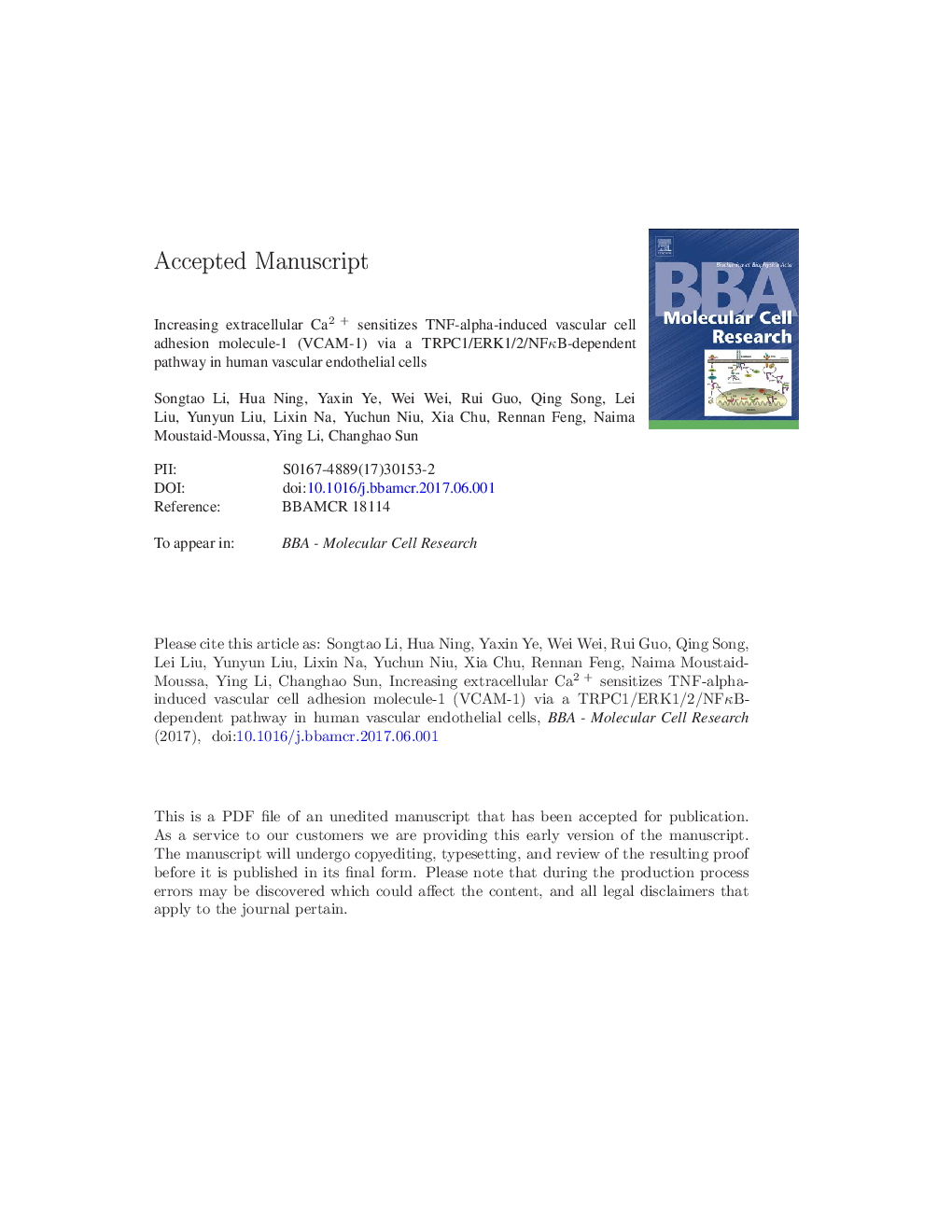| Article ID | Journal | Published Year | Pages | File Type |
|---|---|---|---|---|
| 5508820 | Biochimica et Biophysica Acta (BBA) - Molecular Cell Research | 2017 | 44 Pages |
Abstract
Increasing circulating Ca2 + levels within the normal range has been reported to positively correlate with the incidence of fatal cardiovascular diseases (CVDs). However, limited studies have been able to delineate the potential mechanism(s) linking circulating Ca2 + to CVD. In this study, we exposed primary human umbilical vein endothelial cells (HUVECs) and human umbilical vein cell line (EA.hy926) to different extracellular Ca2 + to mimic the physiological state. Our data revealed that increasing extracellular Ca2 + significantly enhanced susceptibility to tumor necrosis factor (TNF)-alpha-stimulated vascular cell adhesion molecule (VCAM)-1 expression and monocytes adhesion. Knocking-down VCAM-1 by siRNA abolished calcium-induced monocytes adhesion on HUVECs. Follow up mechanistic investigations identified that extracellular Ca2 +-increased calcium influx contributed to the activation of VCAM-1. This was mediated via upregulation of transient receptor potential channel (TRPC)1 in a nuclear factor (NF)κB-dependent manner. Most importantly, we found that a novel TRPC1-regulated extracellular signal-regulated kinase 1/2 (ERK1/2) pathway exclusively contributed to calcium-induced NFκB activation. This study provided direct evidence that increasing extracellular Ca2 + enhanced TNF-alpha-induced VCAM-1 activation and monocytes adhesion. Moreover, we identified a novel TRPC1/ERK1/2/NFκB signaling pathway mediating VCAM-1 activation and monocyte adhesion in this pathological process. Our studies indicate that blood calcium levels should be strictly monitored to help prevent CVD, and that TRPC1 might act as a potential target for the treatment and prevention against increased circulating calcium-enhanced CVDs.
Keywords
VCAMMCPTRPCTRPC1CaSRHUVECSIKKIκBCVDsERK1/2IκB kinaseROS[Ca2 +]iinterleukinCardiovascular diseasesvascular endothelial cellSOCnuclear factorintracellular calcium concentrationtumor necrosis factorinhibitor of κBvascular cell adhesion moleculeNitric oxideCalcium influxmonocyte chemotactic proteinTransient receptor potential channelStore-operated channelextracellular signal-regulated kinase 1/2Reactive oxygen speciesCalcium-sensing receptor
Related Topics
Life Sciences
Biochemistry, Genetics and Molecular Biology
Biochemistry
Authors
Songtao Li, Hua Ning, Yaxin Ye, Wei Wei, Rui Guo, Qing Song, Lei Liu, Yunyun Liu, Lixin Na, Yuchun Niu, Xia Chu, Rennan Feng, Naima Moustaid-Moussa, Ying Li, Changhao Sun,
